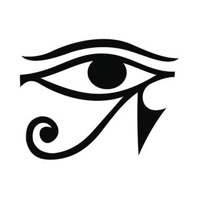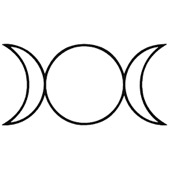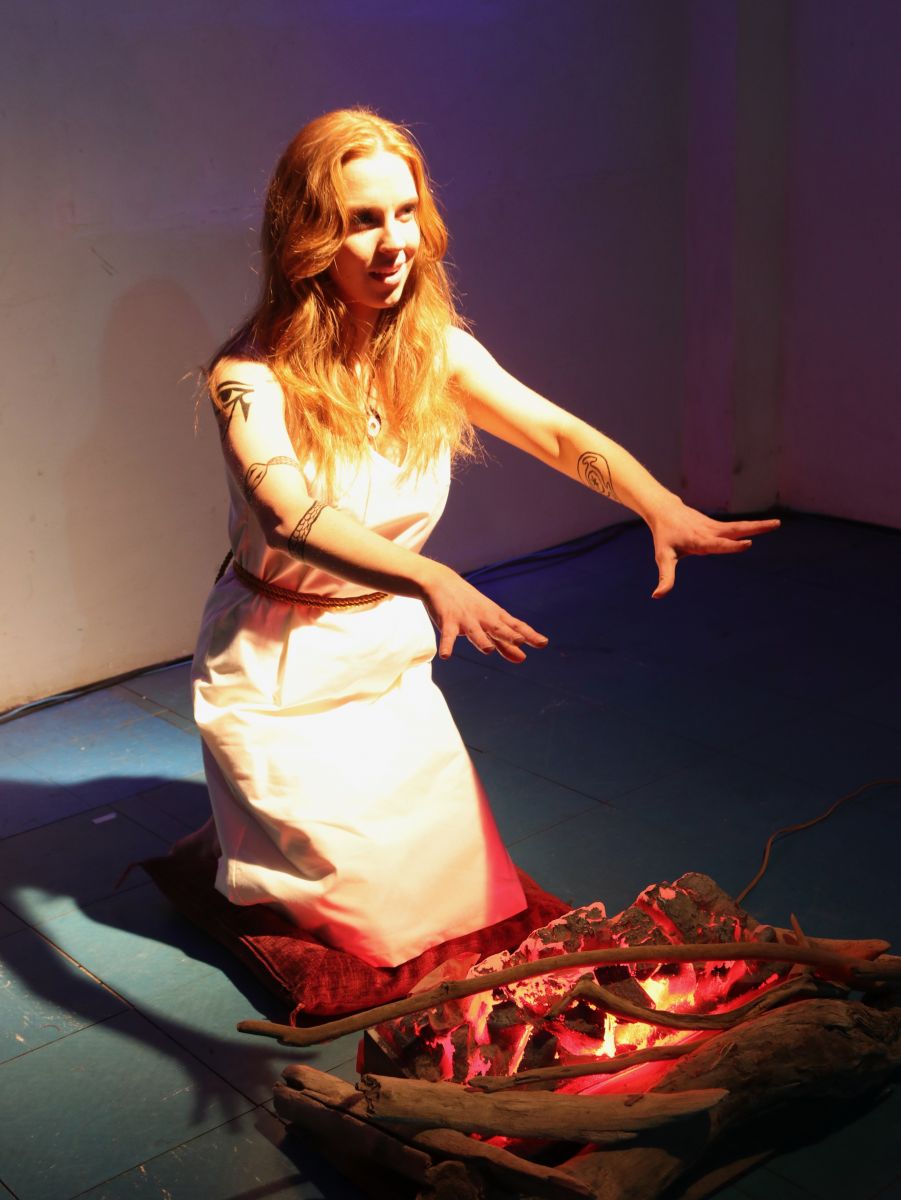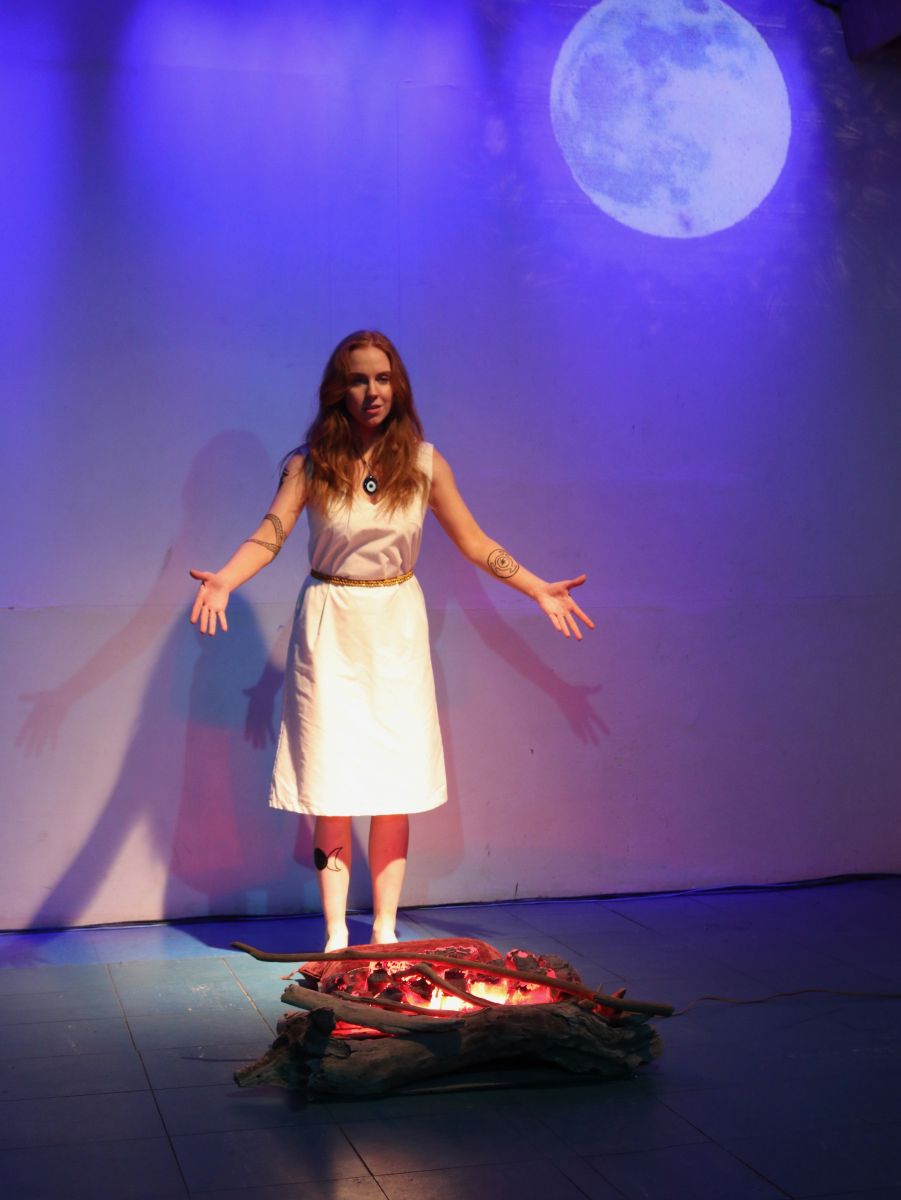Practitioners' Voices in Classical Reception Studies
ISSN 1756-5049
You are here
- Home
- Costumes, Body Art and Props
Costumes, Body Art and Props
Some notes on the costume, body art and props used in Love Magic, by Michael Ewans.
Costume
The specifications which I drew up for the dressmaker were:
Cream cotton dress. Sleeveless; V-neck (hint of cleavage). (Gold sash to be tied around waist to gather it in, not attached to dress.) Length to just below the knees; dress slightly flared from the hips.
The aim was to give a Classical 'look', without aiming for any kind of authenticity; and to reflect that Simaitha is a working-class girl, and even one of her best dresses, worn to approach the gods in a magic ritual, would not be elaborate. Simplicity and elegance were the criteria. The decision not to make it full-length gave the actress mobility, and we also had the opportunity for body art on her calf.
I deliberately avoided making Simaitha look like an alternative culture chick dabbling in the occult. Both I and the actress felt that it was important to our vision to present her visually primarily as a suffering young woman who has been brutally dumped, and leave the magic to be presented by what she does, rather than how she looks (apart of course from the body art).
Body Art
Notes by Nicole Kimball, who researched and drew the symbols on the actress' arms and leg. The following images are reproduced from the websites Britannica, Wikipedia and Ancient Symbols.

The Eye of Horus (also known as the wadjet, wedjat or udjat) is an ancient Egyptian symbol of protection, royal power and good health. Although Theocritus’ Idyll 2 is thought to be set on the island of Cos, it was written and possibly performed in Alexandria, making the inclusion of Egyptian magical symbols appropriate. Egyptian and Coptic symbols also became more common in Greek magical practice in the Hellenistic period and, with its symbolic protection and provision of good health, this would have been an appropriate adornment for a practitioner.

The Strophalos, or Hekate’s Wheel, is an ancient Greek symbol of the Greek goddess of magic, Hekate, whom Simaitha calls on at the beginning of the magic section of the performance. The only extant source to record its use is the second-century Alexandrian text, the Chaldean Oracles. This text describes the emblem as a labyrinthine serpent surrounding a spiral that is symbolic of the spinning of the iynx wheel. Its placement on the left arm of the actress is significant as, to the ancient Greeks, the left side of the body was the ‘bad’ side and was thought to be unlucky.
The Ouroboros (snake tattoo on the right arm) is also an ancient Egyptian symbol that was adopted into Greek magical practice in the Hellenistic period. A symbol of a snake eating its own tail, the Ouroboros originally symbolized either infinity or the cycle of birth and death. Upon its introduction into Greek magical practice, the symbol took on connotations of binding, and is often found encircling protection spells on magical gems and amulets. This symbol is particularly appropriate to Simaitha as she both wishes to renew her relationship with Delphis and to bind him to the various spells she casts on him.

Of all the symbols used, the Triple Moon is the most modern. It is used in many Wiccan traditions to represent the Triple Goddess and her aspects of Maiden, Mother, and Crone. This tradition was adapted for Simaitha as she does call on three goddesses – the Lady Moon (Selene), Artemis and Hekate – all of whom, by the Hellenistic period, had some association with the moon. The symbol can also be representative of Hekate as she was believed to be triple-faced.
Props presupposed by the text of Love Magic

- Bay leaves in bowl
- Wine goblet, to be adorned with red wool
- Barley grains
- Wax doll
- Cornhusks
- Piece of cloth
- Bowl of magic herbs for Thestylis
- *
- Magic wheel (iynx)
- Bullroarer (?)
- Gong
- *
- Thestylis (slave)
